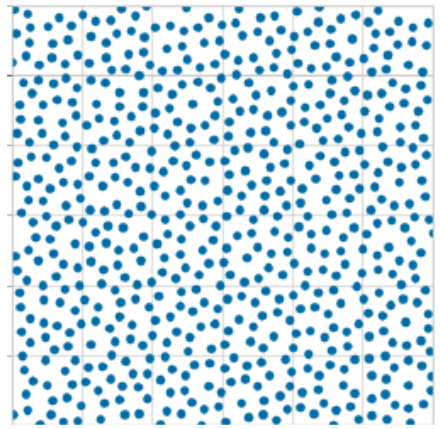Simulation Based Density Scans On Different 2D Colodial System Configurations
Supervisor(s): Prof. Dr. Michael Schmiedeberg
University: Friedrich-Alexander-Universität Erlangen-Nürnberg
Type: Research-oriented Project
Term(s): SS 2018
Keywoards: Computational Project, Condensed Matter, Quasicrystal, Theory Project
In a research project Johannes Schumann from Physics Advances explored how colloidal quasicrystals can be obtained by tailoring the interactions between the particles. Quasicrystals are well-ordered structures that do not posses any periodicity. Therefore, there is no unit cell and the rotational symmetry can be more complex than in periodic crystals.
Quasicrystals: Non-periodic but still well-ordered
Quasicrystals form an astonishing category of materials, with their structure following a well defined law of arrangement. However, there are no periodic iterations of any unit cell. Micrometer-sized colloidal particles often are used as a model system to study structure formation. Therefore, the task of the research project of Johannes Schumann was to find the interactions between the colloids that enable the formation of colloidal quasicrystals.
A Monte Carlo simulation for a many particle system as well as an algorithm for an automatic analysis of the tiling angles of the resulting particle distributions was developed in this work.
Structures close to Penrose tilings observed
The most promising results of the project were achieved using a double-step potential. The results did not lead to a perfect quasicrystal. However, the gained particle distributions show a very prominent partial ten-fold symmetry close to a quasicrystalline Penrose tiling.

You can view the report of the project with more details here.